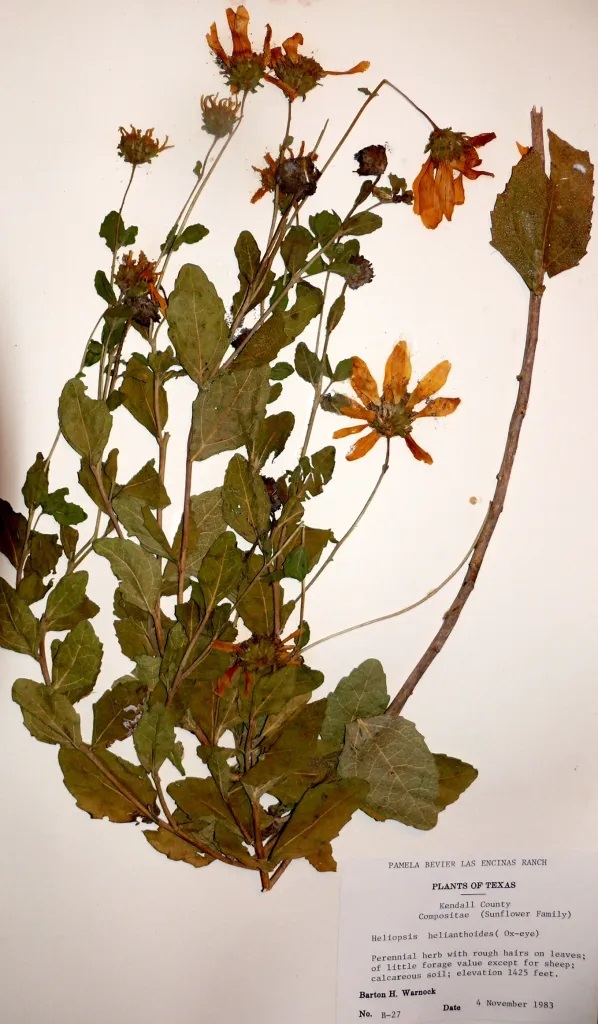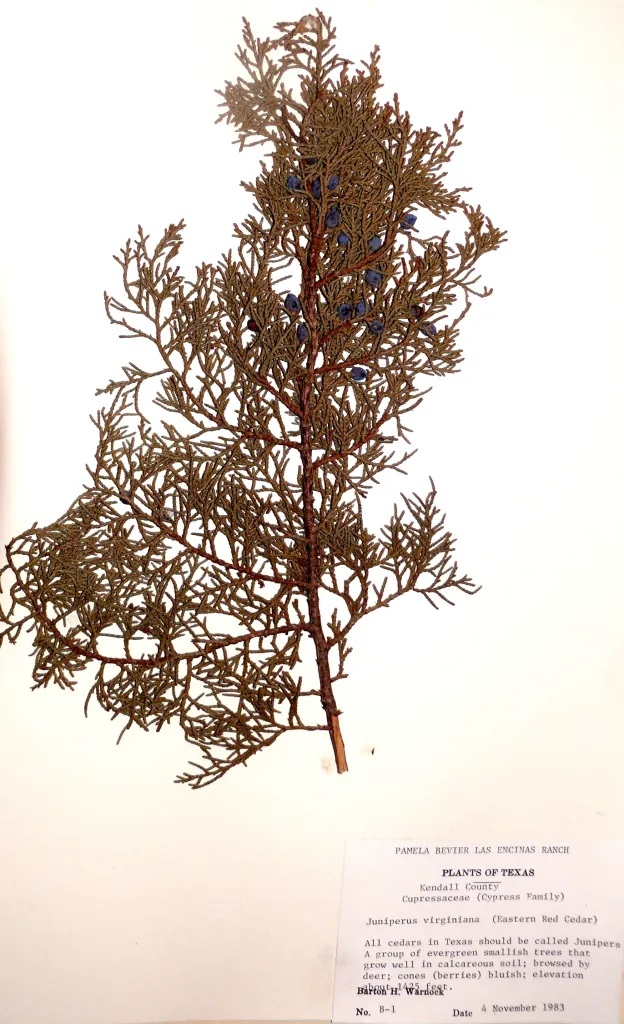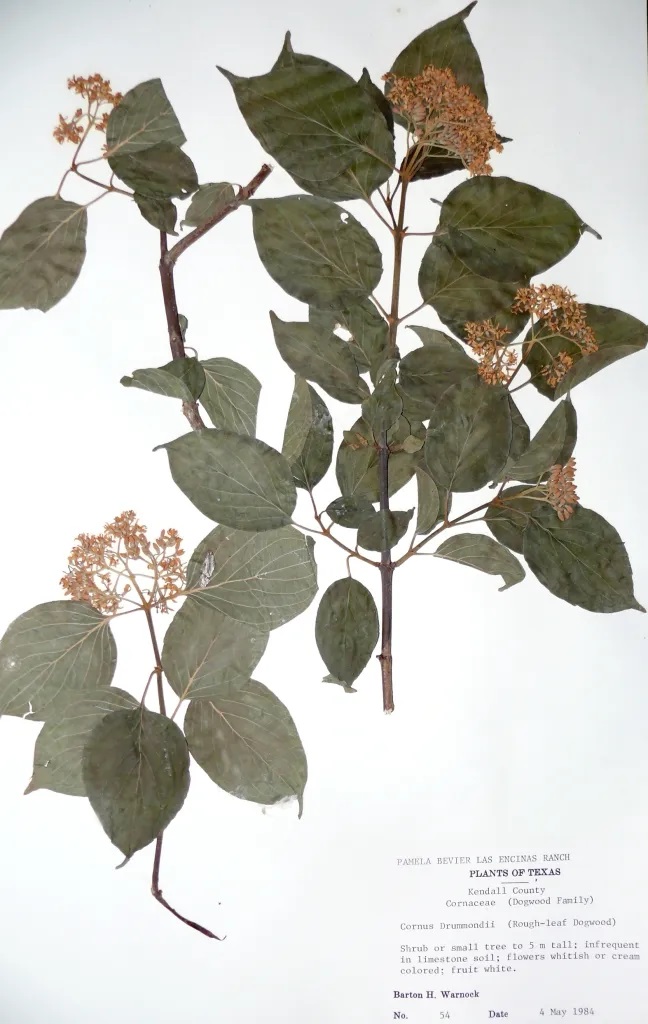Author: Bill Ward
Two or three weeks ago my wife Kathy brought home a collection of pressed native plants for me to see. She suspected I’d be interested in these herbarium specimens because of their high quality, and she was right! This turns out to be a historic collection!

Kathy had been asked if she could use any of the plant specimens for the Cibolo Nature Center “Nature Boxes” that she and other volunteers are taking to Boerne elementary schools. No, the pressed plants are not appropriate for the Nature Boxes, but she borrowed them to bring home. As soon as we opened the folders, we saw that the collection must have been made by Barton Warnock!
Dr. Barton Warnock was the Sul Ross State University botany professor so famous for his work on plants of Trans-Pecos Texas. None of my professional botanist friends knew Warnock ever collected in Kendall County. In fact, it is often told that he refused to botanize out of the Trans-Pecos during his later years.
Part of this herbarium collection was given to Mary Gomillion for safe keeping at the Cibolo Nature Center by Norm Foster just after he retired from Boerne High School. He saved another part of the collection at his home. Foster “inherited” the collection from Buddy Dechert, former Ag teacher at BHS. Dechert and Foster had used a few of the specimens in their classes, but neither one knows how or when the collection went to BHS.

The specimen labels intrigued me. All labels say “Pamela Bevier Las Encinas Ranch, Kendall County” and “Barton H. Warnock.” Each label also has the family and species name, a brief description, a collection date and number. Collection dates were during the fall of 1983 and spring of 1984. If the elevation is given, it is always 1425 feet.
Google tells me that Pamela Bevier, a resident of San Antonio and New York City, owned and operated Las Encinas Ranch from 1979 to 1995. Dr. Bevier also recently owned Park Central Corporate Center in San Antonio. She has been a university professor of French and a public health researcher, both in New York City and at the UT Science Center in San Antonio.
With some pointing in the right direction from some friends who live in Kendall County and with top-notch sleuthing by my good friend Rebecca Rogers, we can confirm that Las Encinas Ranch was north of the Guadalupe River on FM 474. The ranch now has another name.
The years of collection, 1983 and 1984, were shortly after Dr. Warnock retired as head of botany at Sul Ross State University. According to a 1998 memorial written by Dr. Billie Turner, the “guru of Trans-Pecos botany” spent many of his post-retirement years collecting plants for small “ranch herbaria.”

Warnock set up herbaria on many large Trans-Pecos ranches so that the ranch owners, their children, and the ranch managers might know and appreciate what their land grew and where. Apparently Barton Warnock also made a ranch herbarium for Las Encinas Ranch.
I became a true believer in “this is a small world” when I showed an early draft of this column to TPWD botanist Jason Singhurst, and he promptly informed me that Dr. Bevier is his wife’s aunt! Jason told me that when Pamela Bevier and her mother once lived in Alpine, they were good friends with the Warnocks. Apparently Dr. Bevier was a good enough friend to persuaded Barton Warnock to collect on her Las Encinas Ranch, way east of the Trans-Pecos.
This historic Kendall County herbarium contains 24 species of trees, shrubs, and woody vines; 43 species of grasses; and 63 species of forbs (wildflowers).
I checked the data base of the largest herbarium in Texas, the one at the University of Texas at Austin, and there is no record of Warnock collections from Kendall County, nor from the nearby counties of Bexar, Kerr, Medina, Bandera, Hayes, Uvalde, or Real. He did collect a few specimens in Comal and Blanco Counties during 1946, about the time he was finishing his PhD work at UT.
Several species included in the Las Encinas Ranch herbarium are not listed among the Kendall County specimens in the UT herbarium. Not yet, anyway. Permission has been given by Norm Foster and Mary Gomillion to present the entire Kendall County ranch herbarium to the Plant Resources Center, The University of Texas at Austin, where the specimens will be suitably preserved and available for botanical research.


